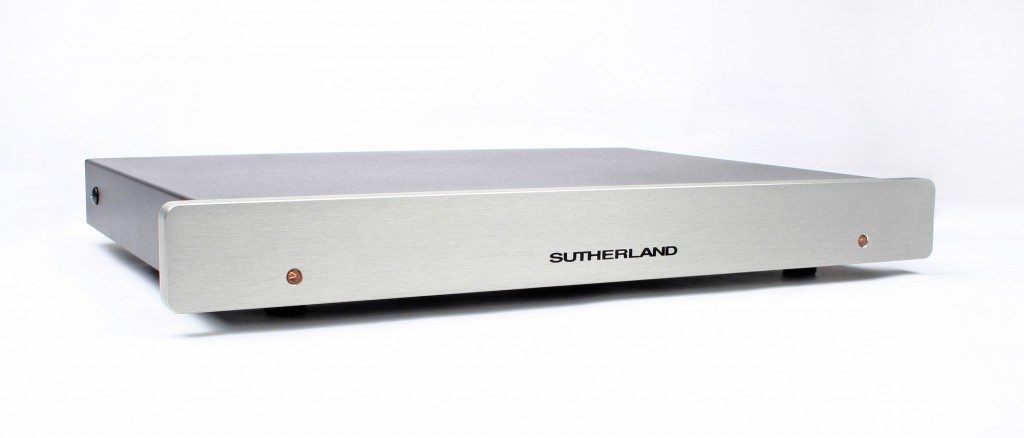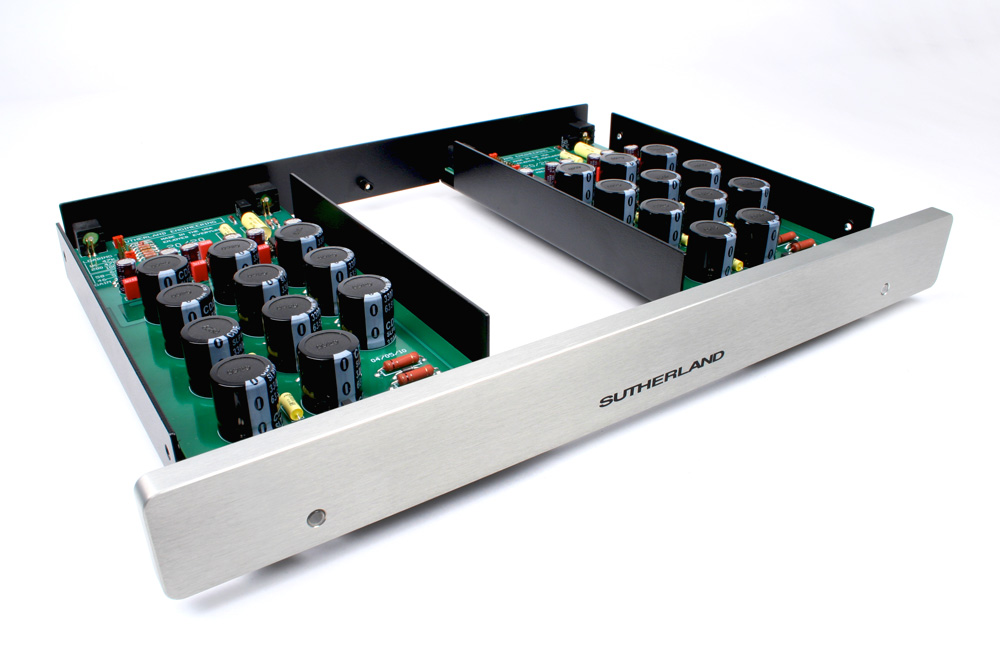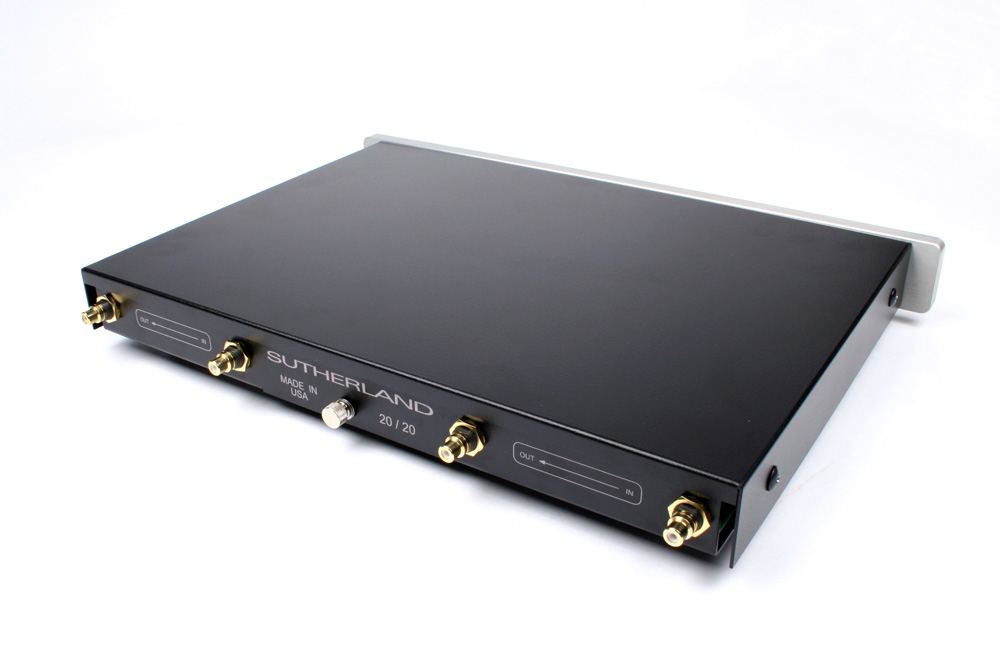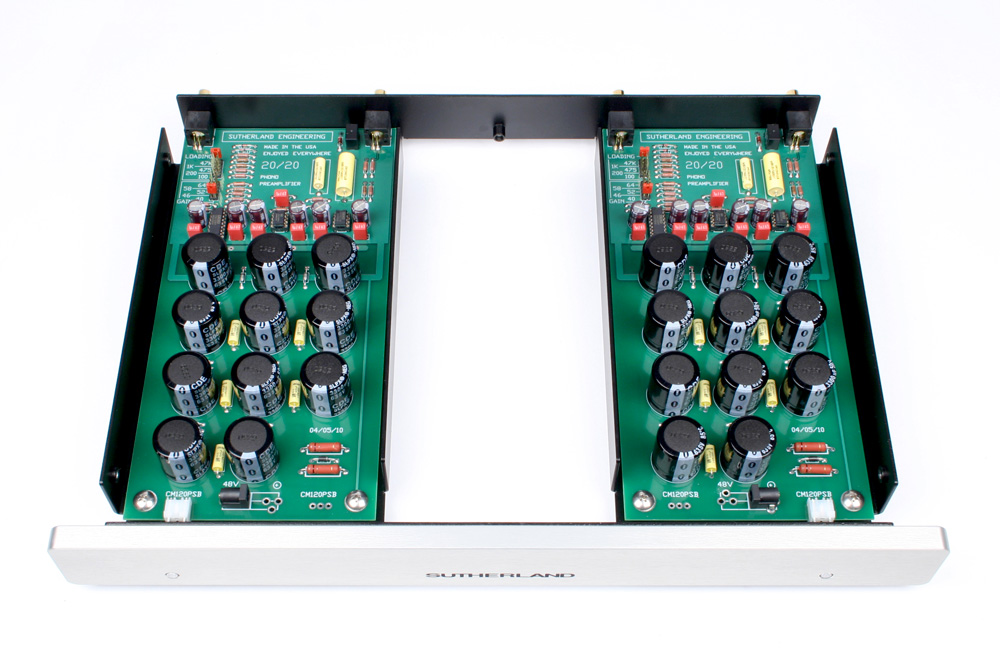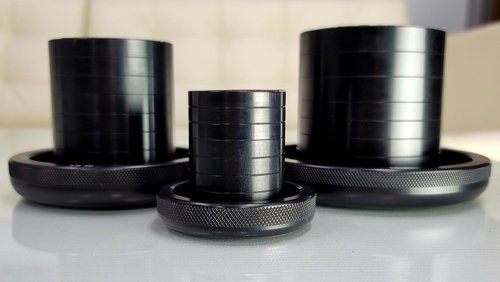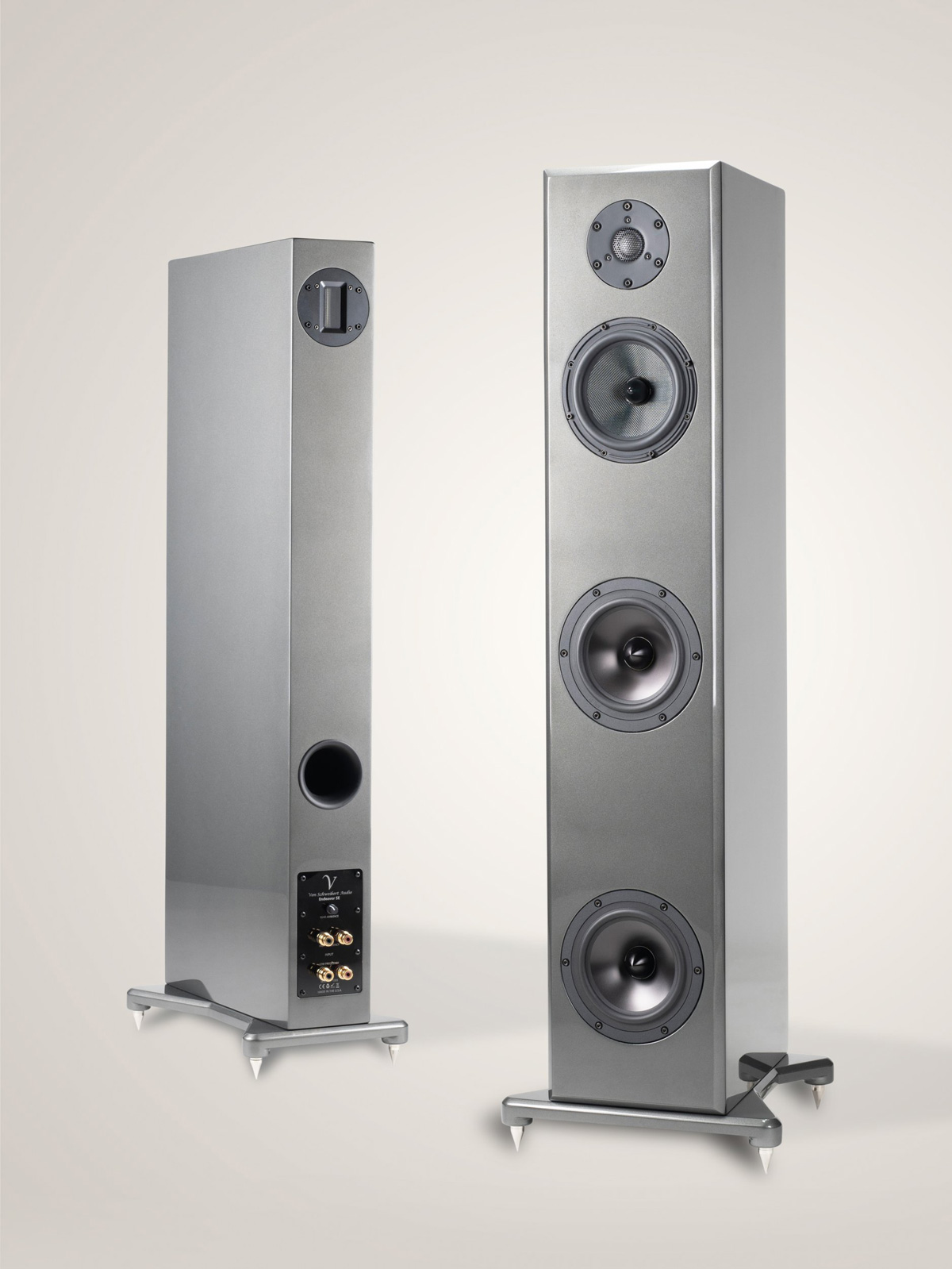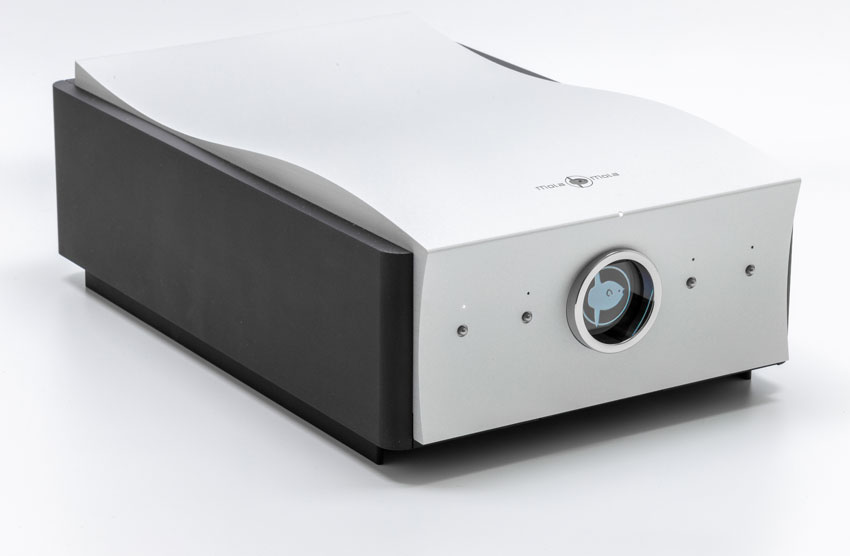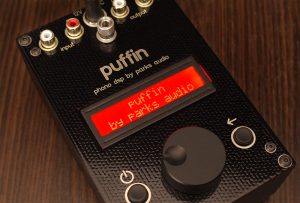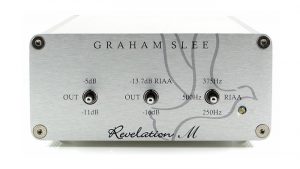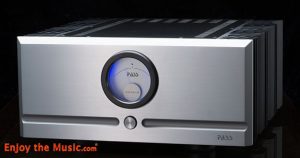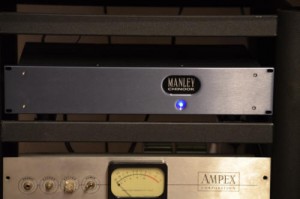When Less Offers More
In Issue 96 (this review has taken far too long, about which more in Part 2), I previewed several knockout products that had taken up temporary residence here at the Lounge (HERE). One of the new arrivals, Ron Sutherland's knockout 20/20 phono preamp, a unit that has been available to music lovers for some time, really tickled my fancy. Introduced to the listening public in 2011, the third year of the Obama Administration (man, that really seems like a long time ago), the 20/20 follows on the heels of its smaller, less-expensive sibling, the KC VIBE phono stage that I raved about in issue 94. It was Mr. Sutherland who identified the 20/20 as the next product in the Sutherland Engineering line-up that I should listen to following my VIBE encounter.
In my preview, I described the 20/20's sound as "superbly natural in overall presentation," and oh-so-right in sheer musical terms. Laser-quick, incredibly detailed, with a wonderfully open and transparent voice, the 20/20 infuses every LP I play with life, energy, and a remarkable naturalness, delivering sound that is as impactful as it is engaging. At its very attainable price of $2200, it remains one of the truly great bargains in high end audio, and, at the ripe old age of almost 8, gives truth to the lie that newer means better.
In the intervening years the 20/20 has become something of a modern classic amongst LP addicts in-the-know. One highly-respected reviewer friend recommends the 20/20 to audiophiles yearning for near reference-quality sound, but who can't afford to drop the big bucks on models like the very fine ModWright Instruments PH 150 Reference Tube Phono Stage ($7900), or the equally enticing transformer-coupled Sutherland Engineering MCX Phono Stage ($6000).
While not cheap, the 20/20's $2200 price tag puts genuine high-end sound quality well within reach.
To put the 20/20's price vs. performance ratio into context, the Sutherland journeyman has proven more than capable of holding its own in the company of some damn fine gear here at Casa Jeffries, including the just-over $18K Audionet WATT and $6K Musical Fidelity M6 Encore 225 integrated amps, not to mention my reference Focal Sopra No. 1 and Von Schweikert Unifield 2 Mk.III compact speakers. Think of the 20/20 as an anchor phono stage that can run toe-to-toe with any reasonable mix of partnering products.
The Mechanics of Minimalism
Before I delve further into the unit's sound, let's take care of the business end of things. For starters, the 20/20 is sound-quality rich, but feature light. Really light! Those of you familiar with Ron's distinctively minimalist design ethos will not be surprised to learn that the 20/20 mines similar terrain. Sleekly styled, some might even say spartan, the 20/20 eschews modern convenience features in the all-important pursuit of better sound. The $1400 price increase over the entry-level VIBE buys you superior build quality, better aesthetics (IMHO), genuine dual-mono construction (meaning each channel of phono preamplification plus its attendant power supply resides in a separate, shielded enclosure), and better sound.
Ron's well-written product literature describes the 20/20 as "literally two identical mono phono preamplifiers. Each channel is on its own circuit board, has its own shielded compartment, power indicator, its own AC power supply, and its own power cord. It is the ultimate in channel separation… power supplies, power cords, and all circuitry are separate. Even the power indicator lights are independent."
To set cartridge gain and loading options, one must remove the textured steel top-plate to access the gorgeous dual-mono circuit boards. Clearly labeled shunts offer gain setting options ranging from 40 to 64dB, suitable for MMs and all but the lowest output MCs. Cartridge loading options (100, 200, 475, 1k, and 47k ohms) seem satisfactorily wide, if not, again by design, offering quite the flexibility of units that offer infinitely variable loading. But be warned: gain and loading options must be set for each channel. One should not expect remote-controlled, milquetoast creature comforts here, and you won't find them here. All the firm's products are decidedly hands-on affairs, and the 20/20 is no different.
Which brings me to my first minor gripe: removing and reinstalling the machined steel top-plate isn't quite as easy as I would like. The top-plate sits very, very snugly atop the preamp chassis, requiring a bit of user skill and determination to finesse the sucker off. After several tries, I found that gently slipping the top-cover over the rear "wings" of the similarly constructed bottom portion of the chassis offered the path of least resistance. In a perfect world, I would ask the designer to slightly increase the width of the top plate for quicker access to the meticulously arranged circuit boards, plus some damping pads to minimize metal-on-metal wear between the removable top plate and the fixed-in-place bottom portion of the chassis.
Aware of this shortcoming, Ron added the following update: "I hardly ever crack open a 20/20. Some months ago, I had to go in for some testing. So, I pulled a new 20/20 out of shipping stock. That cover was too damned tight—it sure made a bad impression on me. Opened more boxes, all too tight. A tolerance drift in metal fabrication. For some reason, the production people just adapted to the tightness and developed a knack (for removing the top cover) without telling me. Not sure how long they had been shipping like that. Much to my surprise, you and I are the only 'complainers' I know about.
"New covers are wider and easy to get on and off. If any customer has a tight 20/20 they are frustrated with, they just need to let me know and I'll send a new cover. No charge."
'Nuff said!
My second gripe is directed at the dual-mono power supply cable attachment setup. I have no problems with dual mono power distribution. The sonic benefits of this approach, an absence of background noise and hash, admirable dynamic grip, and superior sound-staging, speak for themselves. My beef has to do with the system set-up arrangement. To power the 20/20 (there is no on-off switch, another Sutherland trademark), one must connect the two regulated tabletop power supplies (grown-up versions of your standard wall wart) to taps mounted toward the front of the dual mono circuit boards.
As Ron both explains and warns in the 20/20 product lit: "Don't be looking for power connections on the back panel. Instead, you will find them located at the front and under the cover (emphasis added). That is one of those form-follows-function decisions. The front of the circuit board IS where the power enters the circuit, therefore that is where the connector went. On your car, the gas cap is very near the gas tank. It is not located at the opposite end of the car. Putting the entry point at the front permits power supply wires (low voltage DC) to be routed well away from all the sensitive part of the circuit. Contrast that with the AC IEC power connector (high voltage AC) conventionally located on the back panel very near the preamp circuitry and all the input/output jacks."
In practical terms, if one, or both, of the regulated PSU connectors wobble loose inside the chassis, you must remove the steel top plate and manually re-attach the connector(s). This happened twice during the many months that the Sutherland decoded LPs here at Casa Jeffries. Both instances occurred when I needed to swap out other gear and move the 20/20 from its designated component shelf.
The takeaway here is that the 20/20 is probably not the phono stage for music lovers that routinely change cartridges, or who like to experiment with various loading options to "season" the sound of their pricey MCs. OTOH, the 20/20 strikes me as the ideal solution for the music lover who only makes loading adjustments when changing cartridges every four or five years.
Ron added a minor gripe of his own, more a warning really, to potential purchasers. "To your list of two gripes, I would add a third. Because the left and right boards are identical, there is a wide spacing between the two input jacks. Some cables from the tone arm will not span that distance. That can be a real frustration."
You have been warned, dear reader.
Beyond these two quibbles (small ones, I admit) plus Ron's third, I found, somewhat surprisingly at first, that I preferred the "tweaky" hobbyist-centered approach of the 20/20 to the convenience-centered focus of some other phono stages that I have used or own. Manually setting gain and loading choices imparts a tactile feeling of connectedness to the phono stage, and to the process of playing decades-old vinyl discs.
Sweet Sounds from Silence
A standout feature of the 20/20 is the almost total absence of sonic detritus and intrusive noise. One does detect a very faint whiff of analog "whooshing" at the farthest reaches of the preamp (or integrated amp) volume control range, but little else until then, and scant little beyond. The dual-mono architecture, over-specked power supply, and elegantly reductionist phono circuit layout, no doubt each contributes to the 20/20's essentially noiseless presentation. I also imagine that Mr. Sutherland judiciously sprinkles a pinch of magic dust to his elegant phono circuit boards here and there, but in no uncertain terms, the 20/20 remains, like every other Sutherland product I have encountered or reviewed, a minimalist exercise in design simplicity and engineering refinement.
The noticeable absence of discernible noise artifacts translates into exceptional sonic coherence, captivating tonal purity, and heightened listenability. When these artifacts are suppressed or removed entirely, as they are here, the ear-brain connection simply has less garbage to filter. Because the ear-brain interface has less work to do, one is freed to focus entirely (or almost so) on musical content, not musical content plus subtle distracting distortions. The result is a sense of ease and relaxed musical involvement (plus significantly reduced listener fatigue) that noisier units struggle to deliver.
What the little Sutherland removes in noise and attendant distracting distortions, it gifts in the form of heightened clarity, transparency, and musical naturalness.
Class-leading micro-dynamic expressiveness complements the Sutherland's transparency, openness, and riveting naturalness. Musical transients snap with real speed and authority, yet decay with a silky-smooth finish that should satisfy all but the most ardent tube purists. On a transient-and-decay-rich recording like Erich Leinsdorf and the Los Angeles Philharmonic's direct-to-disc masterpiece Prokofiev: Excerpts from the Ballet Romeo and Juliet (Sheffield Labs), mastered by Doug Wyatt and the late Doug Sax, the 20/20 captured the jagged, menacing angularity of the Act II Finale and the lingeringly sweet lyricism of the Juliet the Young Girl movement with equal conviction.
My listening notes sum up what I heard here: "transients that are not only quick, but immaculately clean, with no overhang or flab." My notes also highlight that the sound possessed "fine scaling with a surprisingly open quality."
The 20/20 also soars with vintage jazz, even discs from labels with noticeably idiosyncratic sonic tails like the classic Blue Notes. On Lee Morgan's The Sidewinder (Blue Note/Acoustic Sounds), for example, the Sutherland captured the leading edges of Bob Crenshaw's bass and Billy Higgins' drum kit with superb delineation. The mid-tempo, Latin-tinged Totem Pole (my personal favorite cut on the album) bobbed and weaved as deftly as the most talented of middleweight boxers, but with the real attack and slam.
What the 20/20 did not do was reproduce music with quite the slam and dynamic scaling of something like the Modwright PH-150 tube/JFET hybrid phono stage I got to spend some time with earlier this year at a colleague's home, or the über phono stages our own Marshall Nack and David Robinson swoon over.
On the other hand, the Sutherland scrupulously unearthed the "tinny" almost "metallic" signature of Barry Harris's piano on the above-mentioned Sidewinder LP. This glare, and the associated hollowing out of the piano's timbral footprint remains I have come to appreciate, an intrinsic characteristic of most of Van Gelder's recordings, particularly his Blue Notes. This quality, along with the sheer verve, energy, and drive of RVG's oeuvre, embodies to a tee the idiosyncratic Blue Note sound. So, while the RVG sound ain't perfect, it perfectly captures the infectious optimism, urban anxiety, boundless creativity, and unbridled sense of cultural forward momentum that defined the American black experience in the late 1950s and 1960s.
To its credit, the 20/20 itself perfectly re-created the unique temporal footprint and distinct tonal signature of every classic Blue Note I pulled off the shelf. In broader performance terms, the 20/20 reproduced every LP I threw at it, old and new, reissued and newly minted, with unwavering fidelity. Of equal import, the little Sutherland seemed to step aside and allow my records to speak in their own voices. In doing so, the 20/20 came as close as any phono stage that I've auditioned to behaving like the proverbial "audio component as musical time machine".
The 20/20's adamant refusal to editorialize discs, what some might call a "just the facts" approach to music making, may strike the novice listener as a bit too matter-of-fact or business-like. This impression would be misguided. Sutherland's middle-weight journeyman defiantly eschews artifice and sonic superficiality, favoring instead an even-handed and unabashedly natural posture that I think most listeners will find quite satisfying and musically rewarding over the long haul, if not electrically attractive at first blush.
Parting Thoughts
If wishes were horses, I would ask (perhaps) for a tad more midrange warmth and body (but, just a few calories, mind you, not a full cup of half-and-half), and (again, perhaps) just a touch more slam and punch in the nether-regions. By way of useful contrast, my reference Parasound JC 3+ phono stage (that unit designed by a man who seems equally obsessed with teasing out the last iota of LP performance for the least amount of cash, John Curl) speaks in a rounder, darker voice, its bottom-up tonal weighting painting sonic landscapes with more purple and eggplant-shaded hues than the Sutherland's floral and honey-saturated brush.
At the end of the day, I could live with either unit (and may end up doing just that) and never, at least in the world of sub-$5K phono stages, long for more. With the Sutherland, I would veer toward warmer, richer balanced cartridges (think the wood-bodied Koetsus and Grados) to secure the best overall tonal balance. While the 20/20 sang sweetly with my reference Dynavector DV-20X low-output MC, it sounded a bit more convincing decoding the superb Zu/Denon DL-103 MK. II MC cartridge, an updated Cold War-era gem whose chocolate-laced voice better complemented the peppermint-scented 20/20.
As I advised with Sutherland's demure KC VIBE phono stage a while back, if you're itching to step up from your long-in-the-tooth, decades-old $500 phono stage and can afford to spend $2K to do so, get thee hence to a Sutherland dealer and hear what all the fuss is about.
You will not, I promise, be disappointed.
Well done, Mr. Sutherland. Well done!
Sutherland Engineering 20/20 phono stage
Retail: $2200
Sutherland Engineering, Inc.
816.718.7898
All images courtesy of Sutherland Engineering unless otherwise noted.




